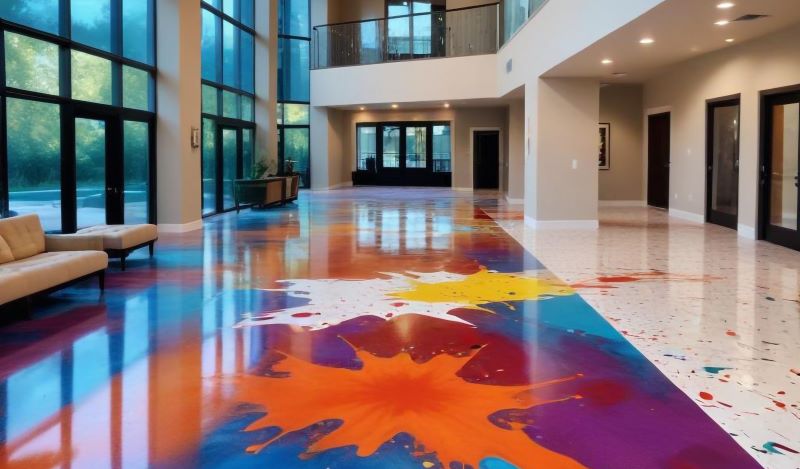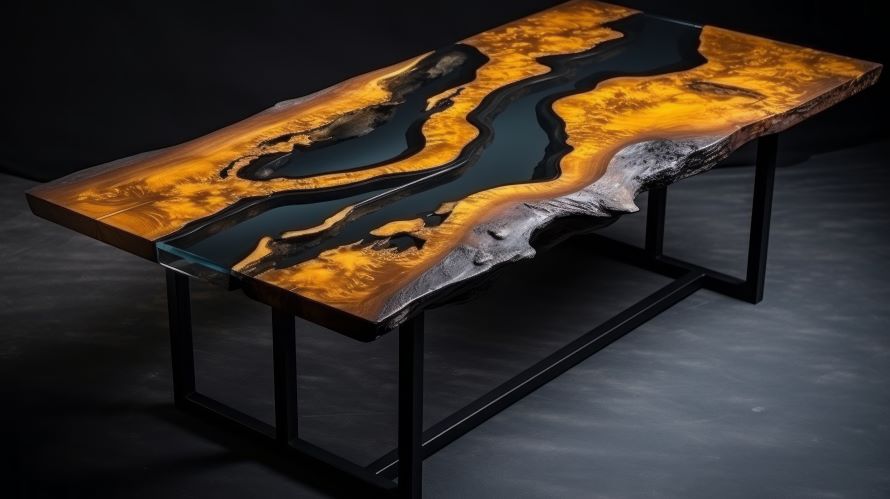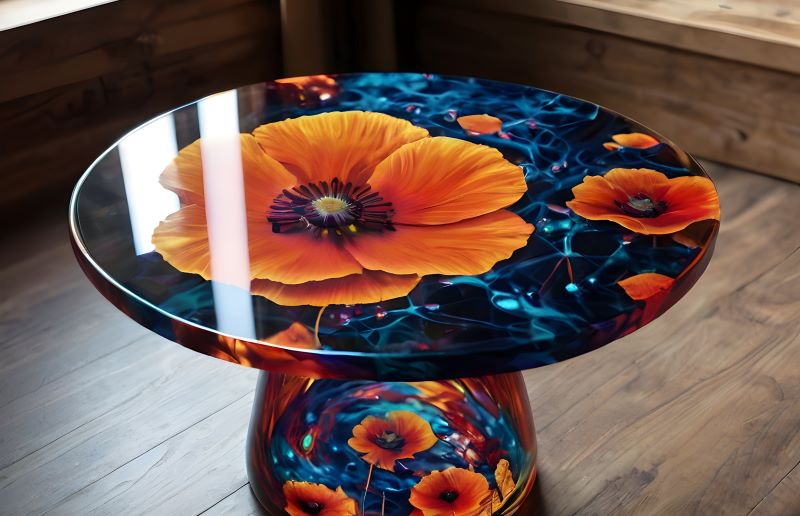
Glass epoxy is a tough material made from glass fibers and epoxy resin. It’s used in many things, like electronics (computer parts) and building stuff (like floors). It’s strong, doesn’t break easily, and can handle heat well.
Table of Contents
What is Glass Epoxy?
Glass Epoxy is a versatile composite material used in various industries. It’s commonly used in electronics and construction.
Primarily known for its role in manufacturing printed circuit boards (PCBs), Glass Epoxy is created by reinforcing glass fabric with epoxy resin. However, its applications extend beyond electronics. For instance, it’s used in construction for tasks like filling floor tile gaps, providing a smoother and more durable finish.
The specific components of Glass Epoxy may vary based on its intended use. Resin and epoxy are core components that contribute to its strength, adhesion, and durability. These elements can be tailored to meet specific requirements. For instance, in floor tile gap filling, resin and epoxy work together to fill gaps, enhance the finish, and provide resistance to wear and environmental factors. This adaptability makes Glass Epoxy a valuable material across multiple sectors.
Why Use Glass Epoxy?

Glass epoxy is prized for its exceptional strength, durability, and electrical insulation, making it ideal for demanding applications. Its resistance to heat, chemicals, and wear, combined with its dimensional stability and lightweight nature, make it a versatile choice for electronics, construction, aerospace, automotive, marine, and industrial sectors where performance and reliability are paramount.
Types of Glass Epoxy Material
FR4 (Flame Retardant 4)
The most widely used type, especially in electronics. It features excellent electrical insulation, mechanical strength, and flame resistance. FR4 is commonly used for printed circuit boards (PCBs) due to its stability and reliability under high temperatures.
G10
A variant of FR4, G10 is a high-strength, rigid material with similar properties but is typically used in environments that require high impact resistance. It’s often used in electrical insulators and structural components.
CEM-1 and CEM-3
These are less expensive alternatives to FR4. CEM-1 combines paper and phenolic resin, offering good performance for less demanding applications. CEM-3 uses woven glass fabric and epoxy resin, providing properties close to FR4 but often at a lower cost.
S2 Glass Epoxy
This type features superior mechanical properties and is often used in aerospace and high-performance applications. S2 glass provides enhanced strength and durability compared to standard glass fibers.
Polyimide Glass Epoxy
Known for its high thermal stability and resistance to extreme temperatures, this type is used in applications requiring high-temperature performance, such as aerospace and high-tech electronics.
High Tg (Glass Transition Temperature) Epoxy
This material has a higher glass transition temperature compared to standard FR4, making it suitable for high-temperature applications. It maintains its mechanical and electrical properties at elevated temperatures.
Epoxy Glass Composite Laminates
These are custom laminates made by layering glass fabric with epoxy resin to achieve specific properties such as enhanced strength, flexibility, or thermal performance, depending on the application needs.
Main Characteristics of Glass-Epoxy

Mechanical Strength
Glass-epoxy composites are known for their high mechanical strength. The glass fibers provide reinforcement, resulting in a material that is rigid and capable of withstanding significant stress and strain.
Electrical Insulation
These composites offer excellent electrical insulating properties, making them ideal for use in printed circuit boards (PCBs) and other electronic components where electrical insulation is crucial.
Flame Resistance
Glass-epoxy composites, especially those designated as FR4, have inherent flame-retardant properties. This makes them suitable for applications where fire safety is a concern.
Thermal Stability
The composites exhibit good thermal stability, with the ability to maintain their mechanical and electrical properties at elevated temperatures. High Tg (Glass Transition Temperature) variants provide enhanced thermal performance.
Chemical Resistance
Glass-epoxy composites are resistant to many chemicals, including acids and solvents, which extends their durability and reliability in harsh environments.
Dimensional Stability
The composites offer excellent dimensional stability, meaning they maintain their shape and size under varying temperature and humidity conditions.
Low Water Absorption
They have low water absorption rates, which helps prevent degradation and maintains the material’s performance in humid or wet conditions.
Durability
The combination of epoxy resin and glass fibers results in a durable material that resists wear, impact, and aging, making it suitable for demanding applications.
Lightweight
Despite their strength and durability, glass-epoxy composites are relatively lightweight compared to metals, making them advantageous in applications where weight reduction is important.
Versatility
They can be tailored to meet specific performance requirements by adjusting the type and amount of glass fibers and epoxy resin, allowing for a wide range of applications from electronics to structural components.
Application of Glass Epoxy
The application of glass epoxy largely depends on its specific form and intended use. However, here’s a general overview:
- For electronics (PCBs): Glass epoxy is primarily used as a substrate material. It’s manufactured into sheets or boards and then undergoes processes like drilling, etching, and component placement to create functional circuits.
- For construction: Glass epoxy is often used as a filler or coating. For example, it can be mixed and applied to fill gaps in floor tiles, creating a smooth surface.
- For repairs: Some glass epoxy formulations can be used as adhesives to bond different materials. It’s essential to prepare the surfaces properly before application.
- For artistic purposes: Glass epoxy resins can be mixed with pigments and poured onto surfaces to create decorative pieces.
Frequently Asked Questions about Glass Epoxy
Can glass epoxy be applied over granite?
Yes, glass epoxy can be applied over granite. For optimal adhesion, ensure the surface is thoroughly cleaned and properly prepared.
Can you pour resin on glass?
Yes, you can pour resin on glass. Resin adheres well to glass surfaces, making it suitable for various applications, including art and protective coatings.
Can you apply glass epoxy over Formica?
Yes, glass epoxy can be applied over Formica. For the best results, clean and lightly sand the Formica surface to improve adhesion before applying the epoxy.
Can glass epoxy stick to an existing epoxy layer without sanding?
Glass epoxy may not adhere well to an existing epoxy layer without sanding. Sanding creates a rough surface that enhances the bond between the new and old epoxy layers.
How can I improve the adhesion of glass epoxy?
To improve glass epoxy adhesion, ensure the surface is clean, dry, and free of contaminants. Lightly sand the surface to create a rough texture and follow the manufacturer’s mixing and application instructions.
Why is my glass epoxy still tacky after 24 hours?
If glass epoxy remains tacky after 24 hours, it could be due to incorrect mixing, inadequate curing conditions, or improper resin-to-hardener ratios. Ensure you follow the manufacturer’s guidelines precisely.
Why is my glass epoxy still sticky after a week?
Glass epoxy that remains sticky after a week may have been mixed improperly, applied too thickly, or not cured correctly due to environmental factors. Verify the mixing ratios and curing conditions to ensure proper hardening.

